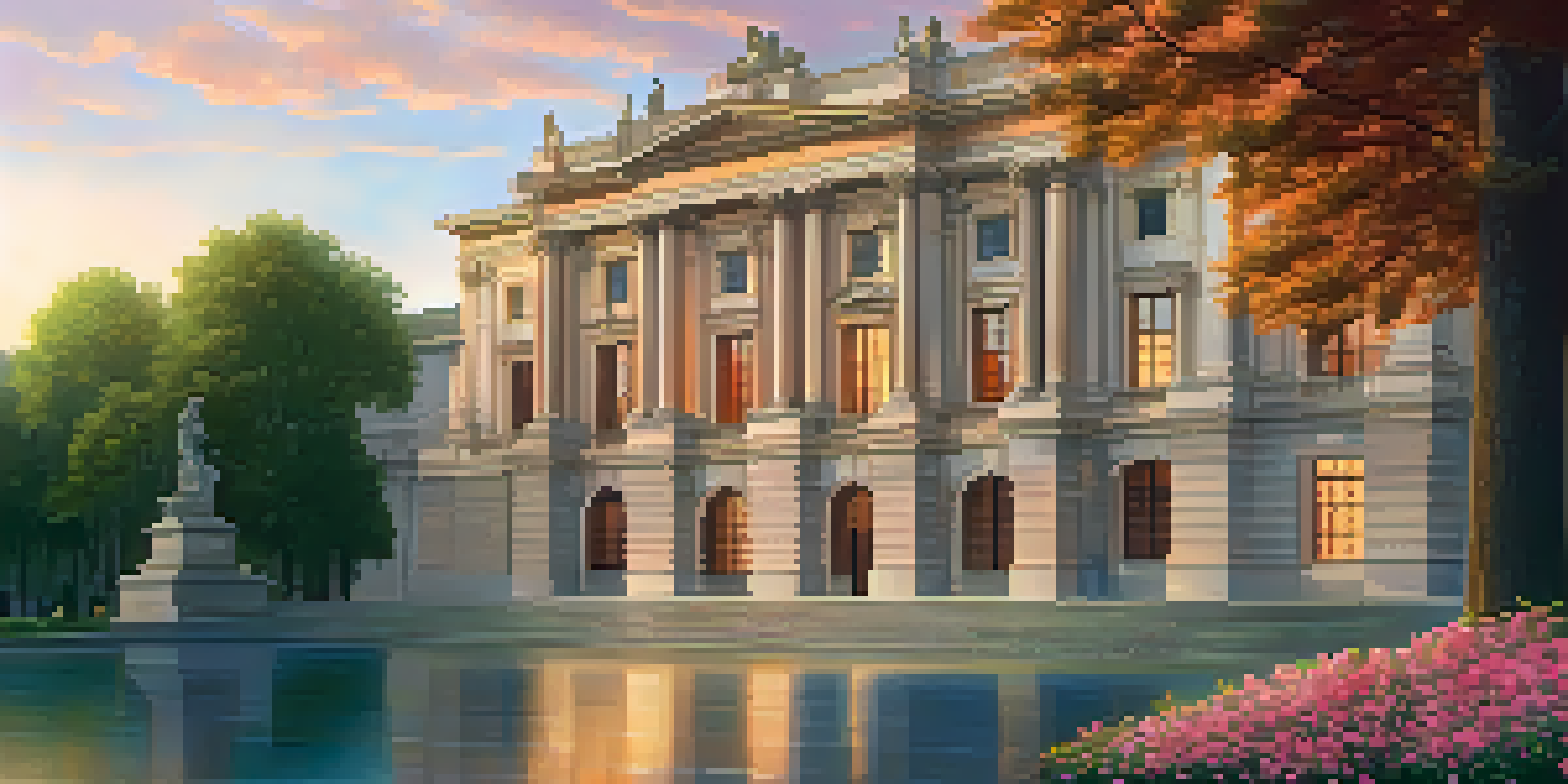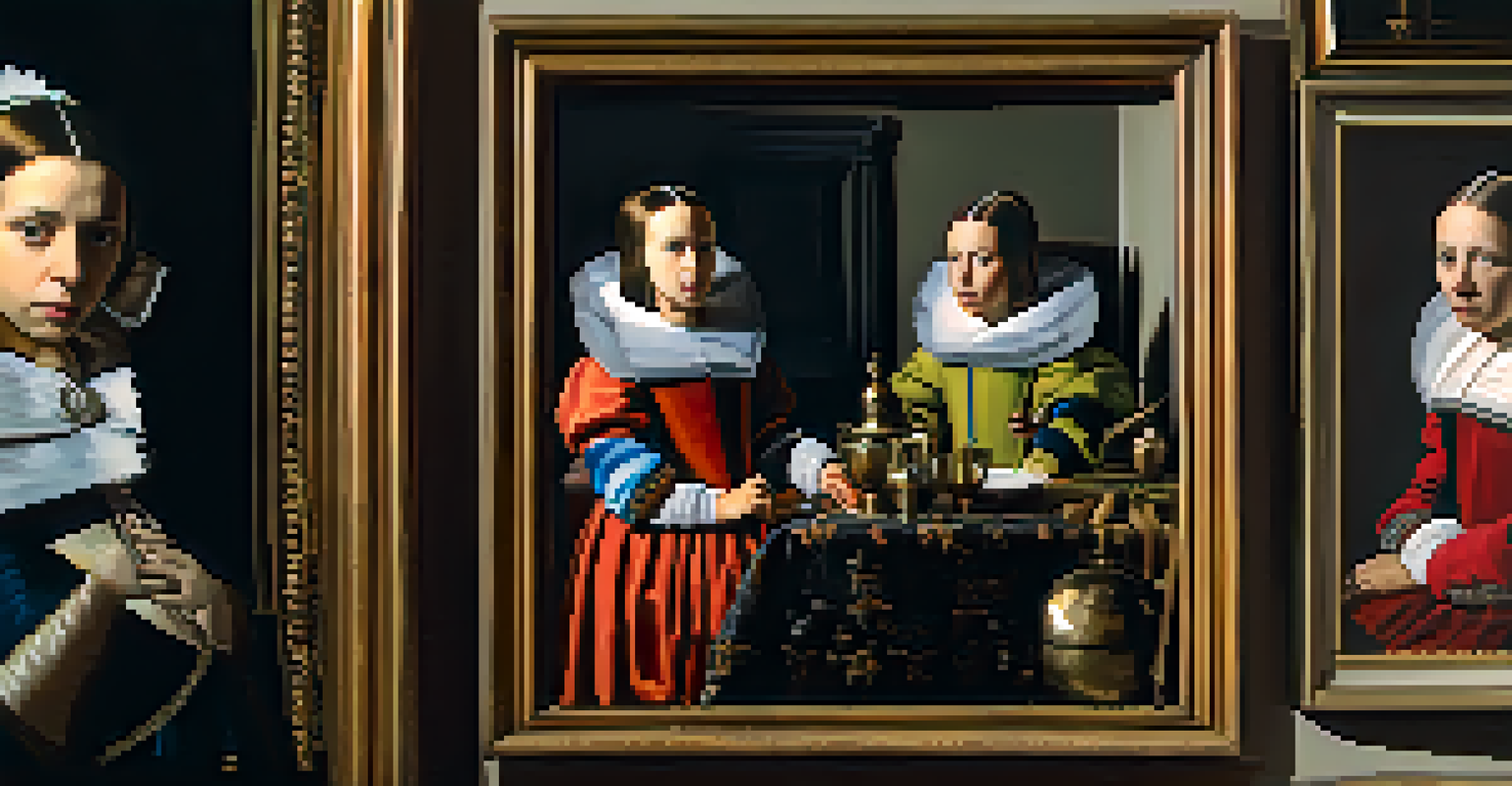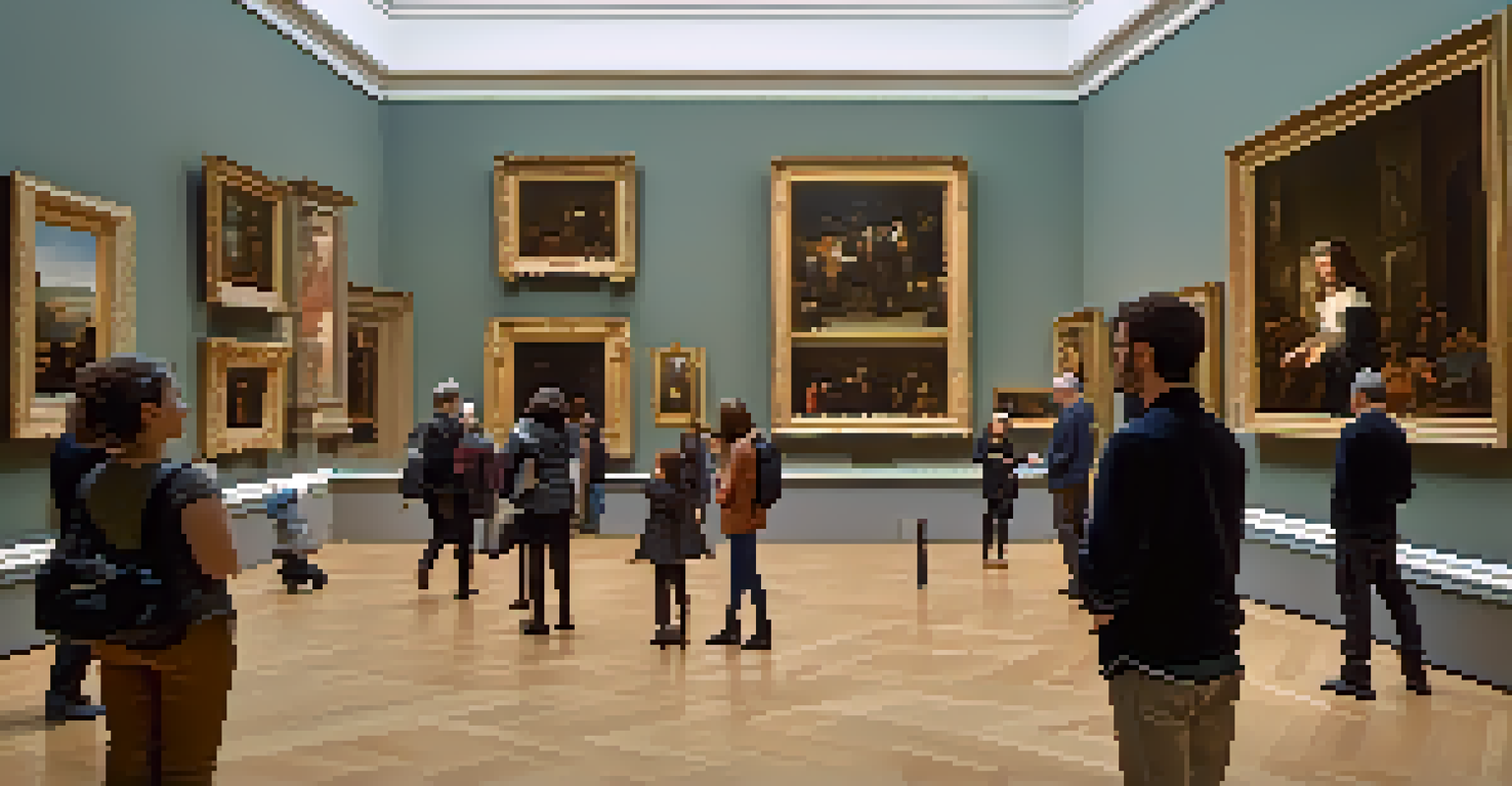Exploring the History of Spanish Art at Museo del Prado

The Birth of Museo del Prado: A Cultural Milestone
The Museo del Prado, established in 1819, is a cornerstone of Spanish culture and a beacon for art lovers worldwide. Originally intended to house the royal collection, it soon evolved into a public museum that showcased the depth of Spanish artistry. The museum's foundation was a response to the changing political landscape in Spain, reflecting a desire to preserve and celebrate national heritage.
Art washes away from the soul the dust of everyday life.
One of the most remarkable aspects of the Prado is its architectural charm, designed by Juan de Villanueva. Over the years, it has undergone several renovations, yet it still retains its neoclassical elegance. This blend of history and modernity invites visitors to step into a space where art and storytelling intertwine.
Today, the Prado houses over 8,000 works, making it not only a repository of Spanish art but also a treasure trove of European masterpieces. This rich collection invites exploration and discovery, ensuring that every visit offers something new to appreciate.
Key Artists Who Shaped Spanish Art
The museum is a celebration of the genius of Spanish artists, with figures like Velázquez, Goya, and El Greco at the forefront. Diego Velázquez, known for his masterful portraits, painted 'Las Meninas,' a work that challenges the viewer's perspective and remains a focal point of art discussions. His ability to capture the human experience makes his pieces timeless and influential.

Francisco Goya, on the other hand, takes us on an emotional journey through his works. From the grandeur of 'The Third of May 1808' to the haunting 'Black Paintings,' Goya's art reflects the tumultuous events of his time, showcasing both beauty and horror. His evolution as an artist mirrors the political unrest in Spain, providing insight into the period's cultural psyche.
Prado: A Cultural Treasure Trove
The Museo del Prado, established in 1819, showcases a vast collection of over 8,000 works, celebrating Spanish artistry and European masterpieces.
El Greco, with his unique style characterized by elongated figures and dramatic use of color, adds another layer to the narrative of Spanish art. His works often evoke deep spirituality and emotion, making them a must-see for any art enthusiast visiting the Prado.
The Influence of Italian and Flemish Art
While the Prado primarily showcases Spanish art, it also illustrates the profound influence of Italian and Flemish masters. The exchange of ideas and techniques between these regions played a crucial role in shaping the Spanish artistic landscape. For instance, the incorporation of linear perspective and chiaroscuro in Spanish paintings can be traced back to Italian Renaissance artists.
Every artist dips his brush in his own soul, and paints his own nature into his pictures.
One cannot overlook the impact of artists like Rubens and Titian, who inspired many Spanish painters with their vibrant colors and dynamic compositions. Their presence at the Prado serves as a reminder of the interconnectedness of European art during the Renaissance and Baroque periods. This blend of styles enriches the visitor's experience and offers a broader context for understanding Spanish works.
As you wander through the museum, you'll notice how these influences manifest in various pieces, creating a dialogue between different artistic traditions. This interplay highlights the evolution of artistic techniques and themes across borders.
The Role of Religion in Spanish Art
Religion has been a significant driving force in Spanish art, particularly during the Golden Age. Many artists were commissioned to create religious works that adorned cathedrals and monasteries, reflecting the deep spiritual devotion of the time. At the Prado, visitors can find remarkable examples of this genre, each telling a story of faith and community.
The works of artists like Zurbarán and Ribera stand out for their intense emotional expression and dramatic lighting. Their paintings often depict saints and biblical scenes that resonate with viewers on a personal level. This focus on religious themes not only showcases the artists' technical skill but also their ability to convey profound spiritual messages.
Influential Spanish Artists
Key figures like Velázquez, Goya, and El Greco have shaped Spanish art, each offering unique perspectives and emotional depth through their iconic works.
As you explore these artworks, consider how they served both as a form of worship and as a means to convey moral lessons to the faithful. The enduring power of these pieces continues to inspire admiration and reflection among visitors.
The Evolution of Spanish Art Styles
Spanish art is not a monolith; it has evolved through various styles and movements, each adding its unique flavor. From the Gothic period to the Renaissance and into the Baroque, the Prado captures this dynamic evolution beautifully. Each era reflects the cultural and political shifts that occurred in Spain, showcasing the resilience and adaptability of its artists.
For instance, the transition from the rigid forms of Gothic art to the fluidity of Renaissance styles exemplifies a growing appreciation for humanism. This shift is evident in the portrayal of more realistic figures and the use of perspective, allowing viewers to engage with the art on a deeper level. The Prado's collection serves as a timeline of these artistic developments.
As you navigate through the museum, you'll witness how artists responded to contemporary events and philosophies, making art a living history. This journey through time enhances our understanding of Spanish culture and its artistic legacy.
The Prado's Impact on Contemporary Art
The Museo del Prado is not merely a repository of the past; it also influences contemporary art practices. Many modern artists draw inspiration from the techniques and themes found in the museum's vast collection. This ongoing dialogue between past and present fosters a rich creative environment, encouraging new interpretations of classic works.
For example, contemporary artists often revisit themes of identity and culture, much like their predecessors did. The way they engage with historical context enhances their work, creating a bridge between generations. This connection highlights the relevance of the Prado's collection in today’s art landscape.
Artistic Evolution and Impact
The Prado illustrates the evolution of Spanish art styles and continues to inspire contemporary artists by fostering connections between historical and modern themes.
Moreover, the museum actively promotes educational programs and exhibitions that encourage artists and the public to explore these relationships. By fostering a vibrant discourse around art, the Prado ensures that the legacy of Spanish art continues to inspire future generations.
Visiting the Museo del Prado: Tips and Insights
Planning a visit to the Museo del Prado can be an exciting experience, but a little preparation can go a long way. Start by checking the museum's website for current exhibitions and opening hours, as they can vary throughout the year. Consider purchasing tickets online to skip the lines and maximize your time exploring the rich collections.
Once inside, take advantage of the museum's guided tours or audio guides, which provide valuable insights into the artworks and their historical context. This can enhance your understanding and appreciation of the pieces on display. Remember to wear comfortable shoes, as you'll want to spend ample time wandering through the museum’s extensive galleries.

Lastly, don’t rush your visit. The Prado is home to thousands of masterpieces, and each deserves your attention. Whether you're an art aficionado or a casual visitor, taking the time to soak in the beauty and stories behind each piece will make your experience unforgettable.